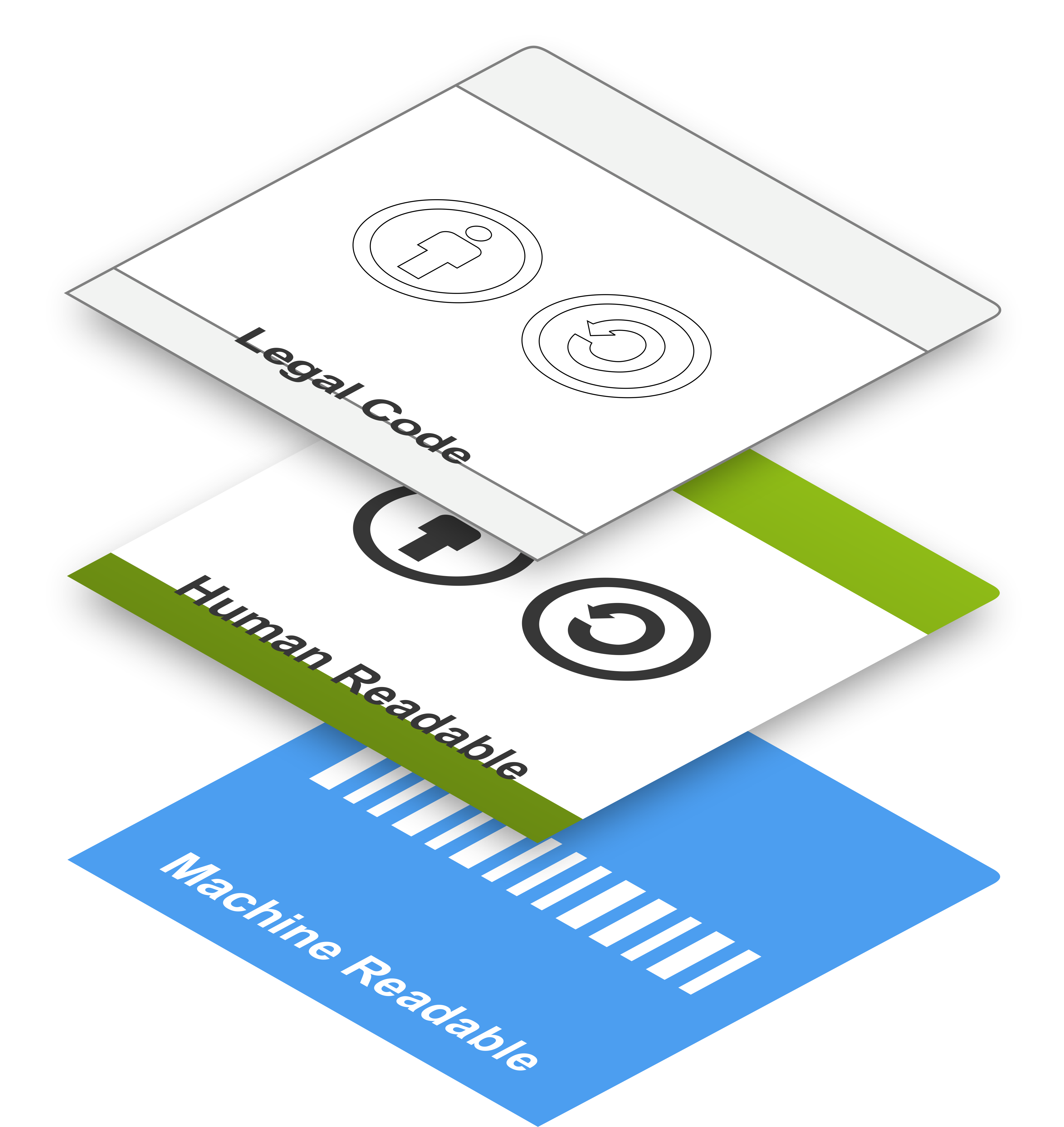
Creators can choose to grant permission for use of their work under the conditions of the license, electing for "some rights reserved" instead of the copyright standard of "all rights reserved" or "no rights reserved" for works in the public domain.
Creative Commons licenses:
Creative Commons licenses consist of a three layer design:

Three Layers of License by Nathan Yergler and Alex Roberts, Creative Commons, is licensed under CC BY 3.0
|
Attribution: Credit must be given to the creator of the work. |
|
| NonCommercial: The work may be used by anyone as long as it is used noncommercially. The work's creator can make still money from the work, but public users the public cannot. | |
| ShareAlike: Adapted or modified works must be shared under the same or compatible license conditions of the original work. | |
| NoDerivatives: The work may be copied and shared, but modifications or adaptations may not be shared. |
Attribution License - CC BY
Allows others to copy, share, and adapt the work, even for commercial purposes, as long as attribution to the creator is provided.
Attribution-ShareAlike License - CC BY-SA
Allows others to copy, share, and adapt the work, even for commercial purposes, as long as attribution to the creator is provided and adaptations of the work are shared under the same or a compatible license. This license is most similar to a "copyleft" open software license.

Attribution-NonCommercial License - CC BY-NC
Allows others to copy, share, and adapt the work as long as attribution to the creator is provided and the work is used only for non-commercial purposes.

Attribution-NonCommercial-ShareAlike License - CC BY-NC-SA
Allows others to copy, share, and adapt the work as long as attribution to the creator is provided, the work is used only for non-commercial purposes, and adaptations of the work are shared with the same or a compatible license.
Attribution-NoDerivatives License - CC BY-ND
Allows others to copy and share the work, even for commercial purposes, as long as attribution to the creator is provided and the work is used and shared without any changes or adaptations. The work may be adapted for personal use, but the adaptation cannot be shared with others.
Attribution-NonCommercial-NoDerivatives License - CC BY-NC-ND
Allows others to copy and share the work as long as attribution to the creator is provided, the work is only used for non-commercial purposes, and the work is used and shared without any changes or adaptations. This license has the most restrictions of any CC license.

CCO Tool
Some creators prefer to dedicate their work to the public domain and release their work with "no rights reserved." The CC0 mark:
Public Domain Mark
This mark does not have any legal implications, but it can be used to label works known to be in the public domain. It is a popular and helpful tool often used by libraries, museums, and archives.
Copyright law does not prohibit activities like reading a book or watching a film.
CC licenses grant extra permission so that users can copy, share, adapt, and remix a work.
CC licenses do not impact copyright exceptions like fair use or accommodations for people with disabilities. For example, if a specific use of a copyrighted work would be allowable under fair use, that use is acceptable whether the work has a CC licenses or not.
CC licenses should not be applied to works in the public domain because that would be restricting the use of a work for which there are no restrictions.
Some CC licensed works may contain copyrighted content that was used with permission. The CC license in this case applies to the rest of the work, but not the copyrighted content.
CC licenses only apply to copyright and do not impact rights covered by patents, trademarks, privacy, and publicity rights.
Sources:
Guide License:
"Creative Commons" by Molly Ledermann, Washtenaw Community College, is licensed under CC BY 4.0
Washtenaw Community College – Bailey Library | 4800 East Huron River Dr., Ann Arbor MI 48105-4800
734-973-3429
WCC Bailey Library Facebook